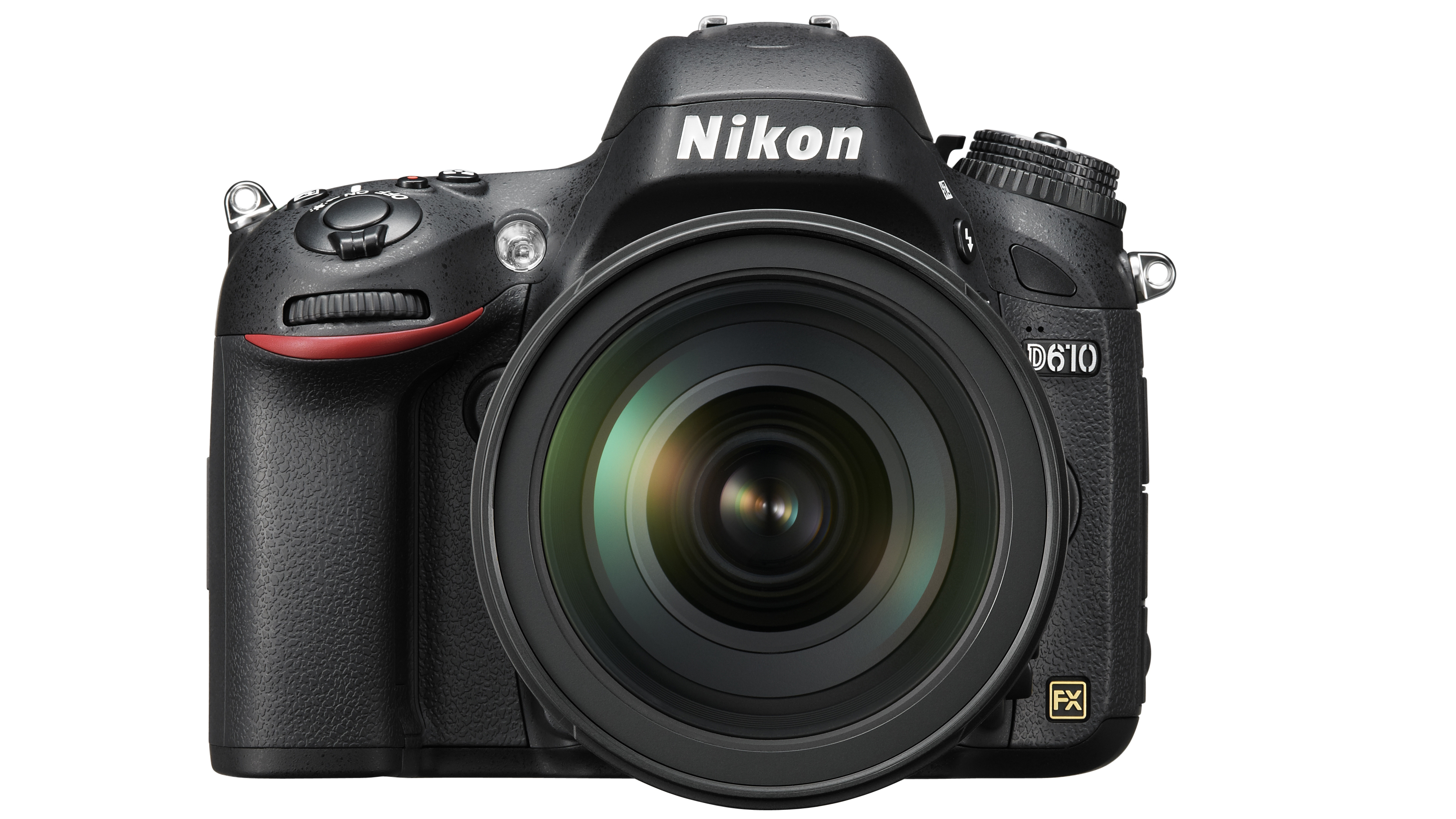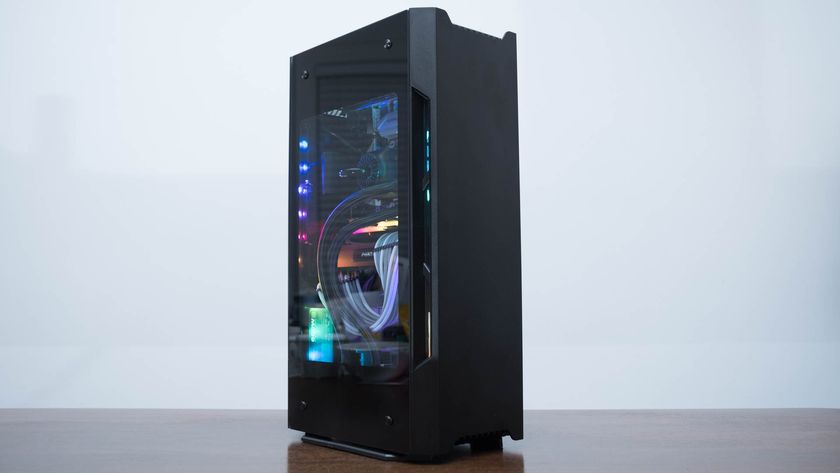Why you can trust TechRadar
We shoot a specially designed chart in carefully controlled conditions and the resulting images are analysed using DXO Analyzer software to generate the data to produce the graphs below.
A high signal to noise ratio (SNR) indicates a cleaner and better quality image.
For more more details on how to interpret our test data, check out our full explanation of our noise and dynamic range tests.
Here we compare the Nikon D610 with the Nikon D600 and Nikon D800, the Canon 6D and the Sony Alpha 99.
JPEG signal to noise ratio
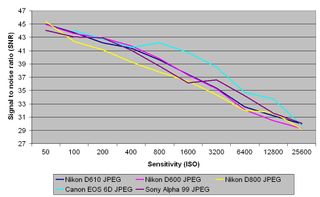
The D610's results are a very close match to the D600's indicating that the JPEG images have a very similar level of noise (and noise control) to the camera it replaces - which isn't surprising.
It compares well with the other cameras up to around ISO 400 when the Canon 6D takes the lead.
Raw signal to noise ratio
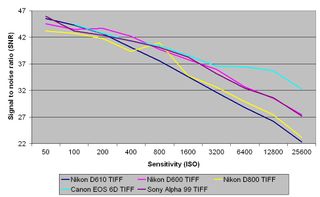
After conversion to TIFF the raw files form the D610 start off being very similar to the D600's but as sensitivity rises the signal to noise ratio drops a little below that of the D600. At 100% images look a little noisier, but they are also sharper, with clearer detail.
JPEG dynamic range
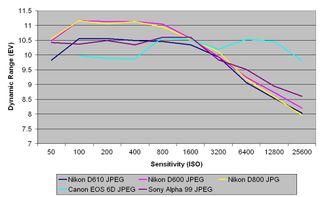
The D610's JPEG dynamic range isn't quite as wide as the D600's, but this most likely explained by a slight change in the processing to produce slightly more punchy images straight from the camera.
Raw dynamic range
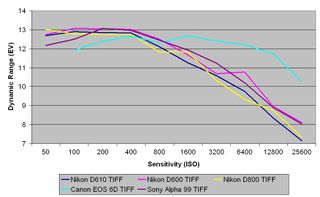
After conversion to TIFF the D610's raw files have a fairly similar dynamic range to the D600's. However as the sensitivity rises the D610's dynamic range drops by around 0.5EV in comparison to the D600. This may be a consequence of the change in the in-camera processing to allow a little more noise through with less smoothing.
Current page: Noise and dynamic range
Prev Page Image quality and resolution Next Page Sample images